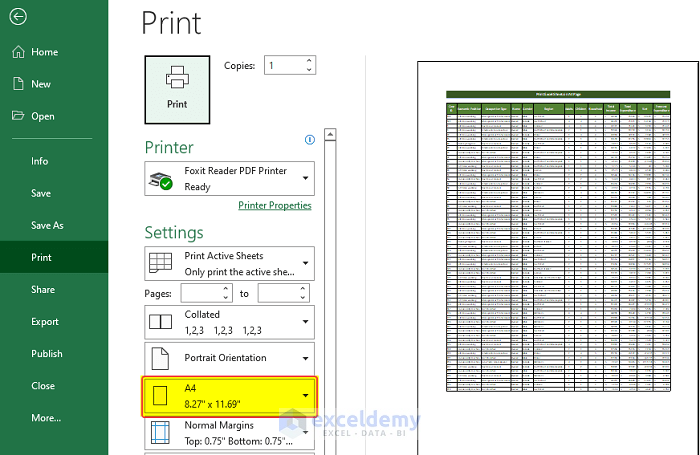5 Ways to Print Large Excel Sheets on One Page

Dealing with extensive Excel spreadsheets can be challenging when trying to print them on a single page. Whether you're handling large datasets, financial reports, or project schedules, ensuring that your large Excel sheets print on one page can save time and resources. In this guide, we'll explore several methods to streamline the printing process, making your large Excel sheets both printer-friendly and visually coherent.
Scale the Worksheet


One of the simplest ways to print large Excel sheets on one page involves scaling your worksheet. Excel provides options to fit your data onto a single sheet:
- Adjust Page Setup: Go to Page Layout > Page Setup group, click on the ‘Page Setup’ dialog box launcher. Here, you can:
- Set the Fit to: option to one page wide by one page tall.
- Adjust the Scaling option to a percentage that best fits your content.
📝 Note: When scaling, be mindful of readability. Very small text might be hard to read, which could reduce the clarity of your printed output.
Use Page Layout Orientation


Switching between portrait and landscape orientations can dramatically affect how your Excel sheet fits onto a page:
- Change the orientation under Page Layout > Orientation in Excel.
- Portrait is often better for narrower data sets, whereas landscape helps with wider tables or charts.
Margins and Print Area


Adjusting the margins and setting a specific print area can also help:
- Shrink Margins: Navigate to Page Layout > Margins and choose narrower options or customize them.
- Define Print Area: Select the range of cells you want to print, then go to Page Layout > Print Area > Set Print Area. This ensures only selected cells are considered for printing.
Remove Unnecessary Data


Before printing, consider if all data is necessary:
- Use filters or conditional formatting to temporarily hide rows or columns not needed for the printout.
- Data Consolidation: If possible, consolidate your data by summarizing it or using pivot tables.
Format Cells for Printing


Proper cell formatting can make your Excel sheet more readable when printed:
- Adjust column width and row height to minimize white space.
- Use Merge and Center for headers to reduce the number of cells while maintaining structure.
- Implement Wrap Text to ensure text doesn’t get cut off.
By combining these techniques, you'll be able to effectively print large Excel sheets on one page, enhancing productivity and presentation quality. Remember, the key is to balance data density with readability to avoid overwhelming your audience or making the printout useless.
Overall, these methods help you manage and print large Excel datasets in a way that's both time-saving and effective. Each technique has its place, depending on the nature of your data and the purpose of your printout. By carefully preparing your Excel sheets, you can ensure they look as intended, whether for internal analysis, presentation, or archival purposes.
Can scaling down affect the readability of the printout?

+
Yes, scaling down too much can make text very small and hard to read. Always adjust the scaling to ensure text remains legible, or consider splitting the sheet if it becomes too dense.
Is landscape orientation always better for printing large datasets?

+
Not always. Landscape orientation is better for wider datasets, but portrait might be more suitable for data that is vertically long. Choose based on your data layout.
What should I do if my Excel sheet still doesn’t fit on one page after adjustments?

+
If your sheet remains too large for one page, consider summarizing the data or using different sheets for different sections of your data, which can then be printed separately.



